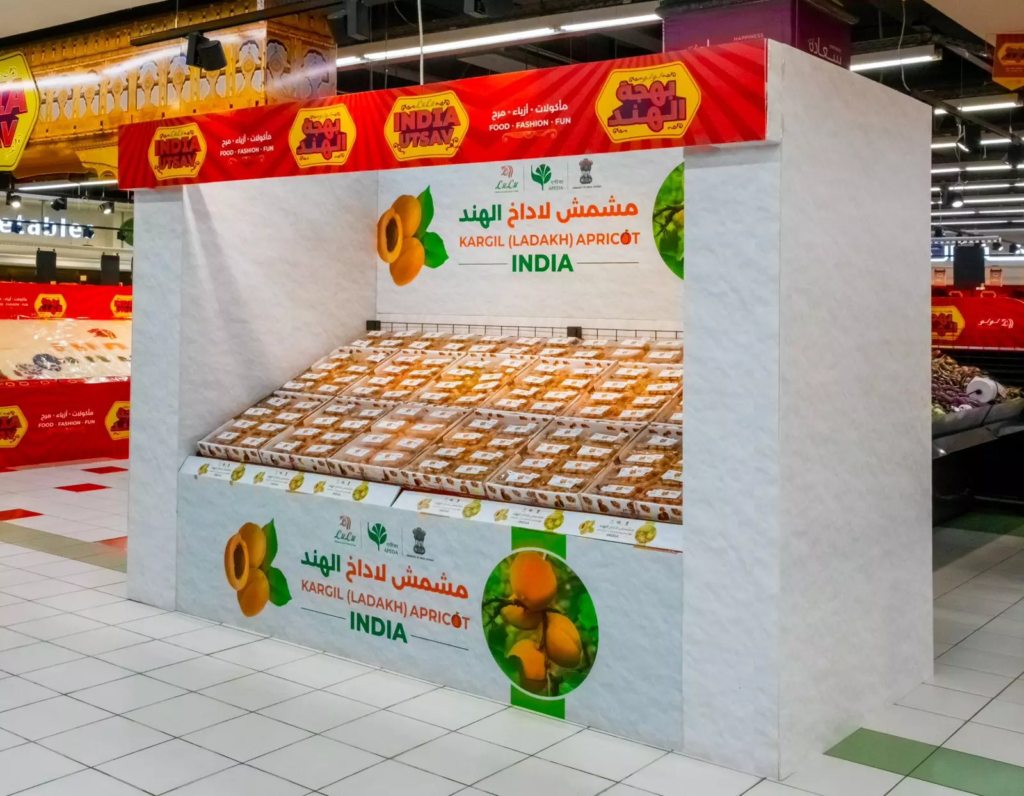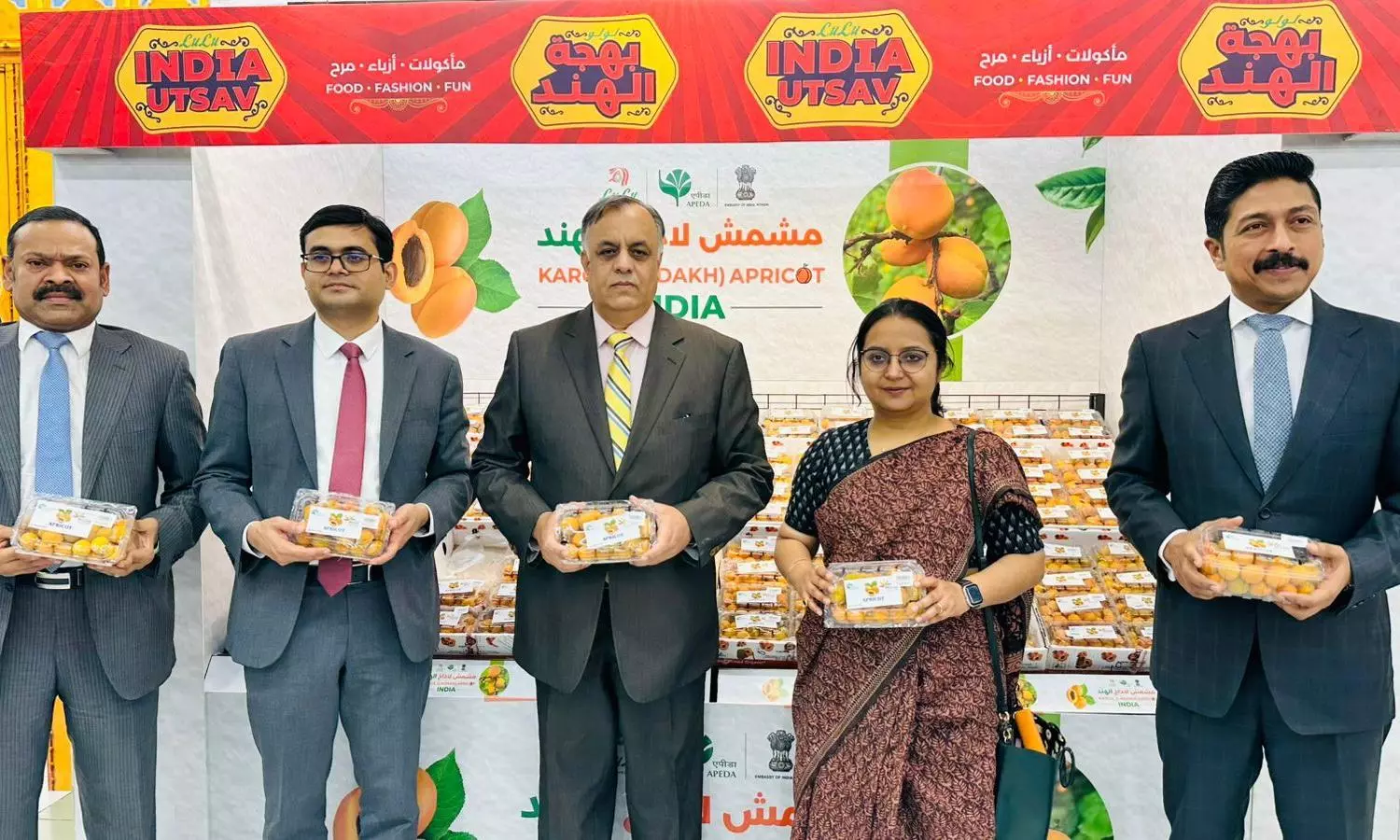Table of Contents
A Historic Celebration of Culture and Flavor
When India marked its 79th Independence Day, the celebration went far beyond speeches and flag hoisting. In Saudi Arabia, a symbolic moment unfolded as Kargil apricots made their grand debut. This was not just about fruit—it was about heritage, resilience, and the power of communities coming together.
Kargil apricots, grown in the cold deserts of Ladakh, have long been known for their extraordinary sweetness, unique texture, and high nutritional value. Their arrival in Saudi Arabia was celebrated as a cultural bridge, carrying the spirit of India to international shores.
The Journey of Kargil Apricots
The valleys of Kargil are dotted with apricot trees, many of which have stood for generations. Families nurture these trees as part of their identity, with the harvest season becoming a festival in itself. Every apricot carries within it not just nourishment, but also stories of endurance, tradition, and love for the land.

Bringing these apricots to Saudi Arabia was no small feat. It required careful packaging, preservation of freshness, and coordinated efforts between farmers, exporters, and government initiatives. The result was a proud moment where the world could finally savor what the people of Kargil have cherished for centuries.
Independence Day With a Flavorful Twist
The timing of the debut was significant. Independence Day is not only about looking back at the struggle for freedom but also about celebrating India’s achievements on the global stage. By showcasing Kargil apricots in Saudi Arabia, the celebration became an inspiring message of progress and potential.
The fruits symbolized more than just agriculture—they symbolized India’s growing soft power, its ability to blend culture with commerce, and its determination to uplift even the most remote communities by giving their produce a global platform.
Empowering Farmers and Communities
For the farmers of Kargil, this moment was life-changing. For years, they battled challenges such as lack of transport, difficult weather conditions, and limited market reach. Many families survived on modest incomes despite producing world-class apricots.
The debut in Saudi Arabia opened new opportunities. Higher demand means better prices, recognition for their work, and hope for a sustainable livelihood. For young people in the region, it means seeing their homeland connected to the wider world. Independence, in this sense, became deeply personal—freedom from limitations and the start of a brighter future.
Symbol of India’s Diversity
Apricots from Kargil are unlike those found elsewhere. Their taste is richer, their texture softer, and their golden hue striking. Introducing them on an international platform highlighted the diversity of India’s agricultural wealth.
India is a land of mangoes, bananas, and countless other fruits, but the apricot stands out as a symbol of Ladakh’s distinct geography and culture. By celebrating them abroad, India showed how every corner of the country adds a unique flavor to the nation’s identity.
Strengthening India–Saudi Arabia Ties
The debut of Kargil apricots was also a diplomatic success. Saudi Arabia has long been an important partner for India, not just in trade but also in cultural exchange. By presenting a delicacy from the mountains of Ladakh, India deepened its bonds with Saudi Arabia, reminding both nations of the value of shared experiences.
Food has a language of its own. In every bite of an apricot, there is a story of India’s soil, its farmers, and its traditions. Sharing this with Saudi Arabia was a way of saying: “This is who we are, and we invite you to celebrate with us.”
Resilience of the Cold Desert
The apricots also told a story of resilience. Ladakh’s harsh climate—with freezing winters and dry summers—has never been easy for cultivation. Yet, the people of Kargil turned these challenges into strengths. Apricot trees thrive in the cold desert, and the fruit becomes a natural gift of the land’s perseverance.

The debut in Saudi Arabia reminded the world that beauty often comes from struggle. Just as India won its independence through hardship, the apricot of Kargil emerged as a golden jewel from an unforgiving terrain.
A New Chapter for Indian Agriculture
This milestone was not just a one-time event. It opened the door for Indian farmers to dream bigger. If apricots from Kargil can reach Riyadh, then saffron from Kashmir, spices from Kerala, or millets from rural villages can also find international recognition.
It marked the beginning of a new chapter where local produce can earn global respect, bringing prosperity to villages and pride to the nation.
Looking Ahead
As the celebrations concluded, one thing was clear: Kargil apricots had become more than fruit. They had become storytellers of a nation’s journey—linking freedom, culture, resilience, and ambition.
India’s 79th Independence Day was remembered not only for flags and festivities but also for the sweet, golden apricots that carried the heart of Kargil to Saudi Arabia. For the farmers, it was a triumph. For the nation, it was pride. And for the world, it was a taste of India’s enduring spirit.
Read More : Rare Leopards Arrive at National Zoo in Remarkable Saudi Effort



